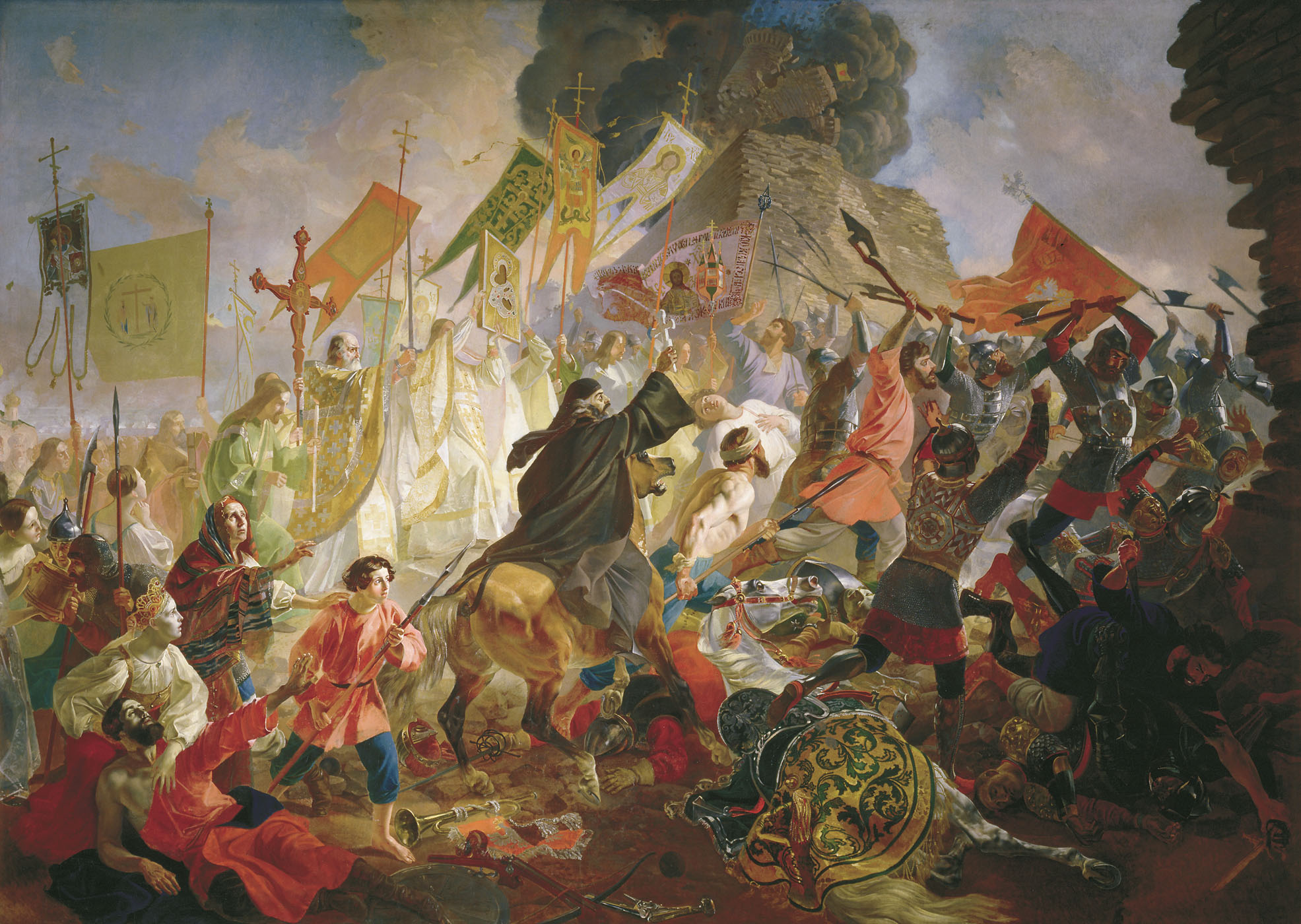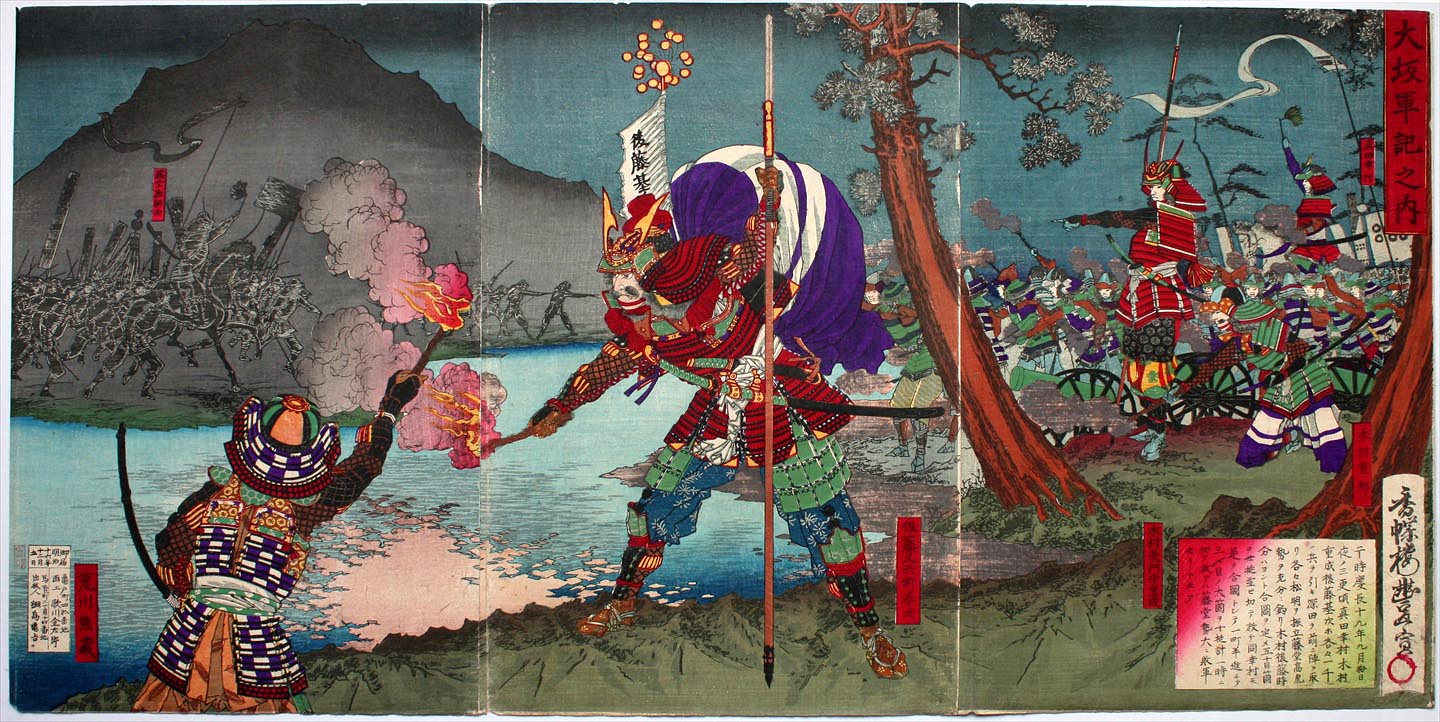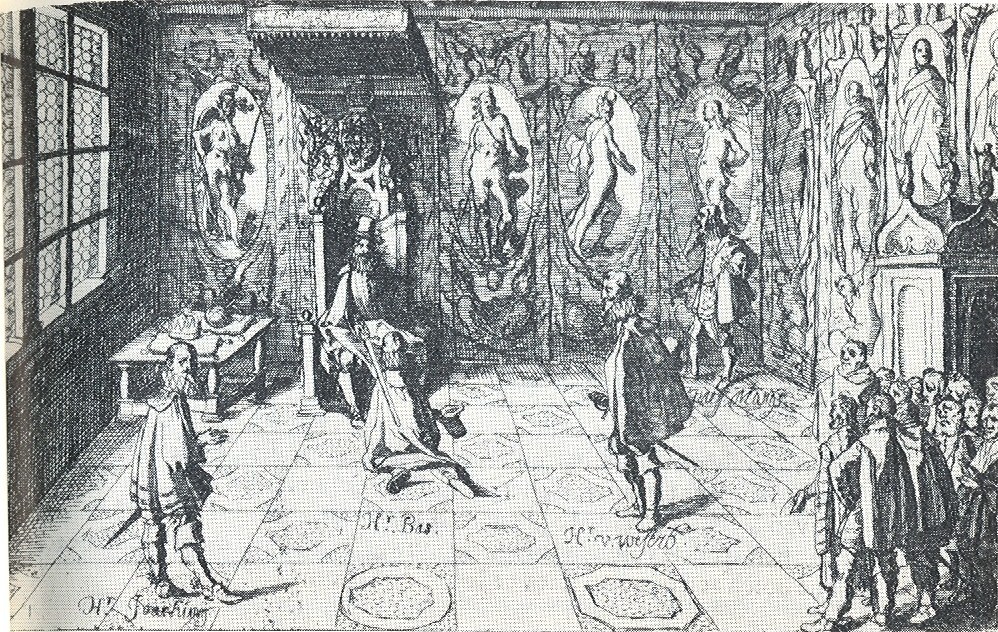|
Siege Of Pskov (1615)
The siege of Pskov between 9 August and 27 October 1615 was the final battle of the Ingrian War. Swedish forces under Gustav II Adolf laid siege to Pskov, but were unable to take the city. Prelude After the Battle of Klushino, the Swedish troops, located in Russia, called in 1609 by Vasily Shuisky, declared war on Russia and in 1611 occupied Novgorod Land. The siege of Tikhvin in 1613 was unsuccessful for the Swedes, but in 1614 they managed to take Gdov. In 1615 the Swedish King Gustavus Adolphus intended to subdue the Pskov land. Siege Approaching Pskov, the Swedes tried to take it immediately, but were repelled by the Pskov garrison with heavy losses. In front of the king, famed field marshal Evert Horn was shot dead from the wall. During the siege, the Swedes shelled the city with artillery, but at night Pskovites successfully closed any breach in the walls, and repeatedly made bold sallies causing the Swedes considerable losses. In September, Pskov even received r ... [...More Info...] [...Related Items...] OR: [Wikipedia] [Google] [Baidu] |
Pskov
Pskov ( rus, Псков, a=pskov-ru.ogg, p=pskof; see also names in other languages) is a city in northwestern Russia and the administrative center of Pskov Oblast, located about east of the Estonian border, on the Velikaya River. Population: Pskov is one of the oldest cities in Russia. It served as the capital of the Pskov Republic and was a trading post of the Hanseatic League before it came under the control of the Grand Duchy of Moscow. History Early history Pskov is one of the oldest cities in Russia. The name of the city, originally Pleskov (historic Russian spelling , ''Plěskov''), may be loosely translated as "he townof purling waters". It was historically known in English as Plescow. Its earliest mention comes in 903, which records that Igor of Kiev married a local lady, Olga (later Saint Olga of Kiev). Pskovians sometimes take this year as the city's foundation date, and in 2003 a great jubilee took place to celebrate Pskov's 1,100th anniversary. The f ... [...More Info...] [...Related Items...] OR: [Wikipedia] [Google] [Baidu] |
Gustavus Adolphus Of Sweden
Gustavus Adolphus (9 December Old_Style_and_New_Style_dates">N.S_19_December.html" ;"title="Old_Style_and_New_Style_dates.html" ;"title="/nowiki>Old Style and New Style dates">N.S 19 December">Old_Style_and_New_Style_dates.html" ;"title="/nowiki>Old Style and New Style dates">N.S 19 December15946 November Old_Style_and_New_Style_dates.html" ;"title="/nowiki>Old Style and New Style dates">N.S 16 November] 1632), also known in English as Gustav II Adolf or Gustav II Adolph, was King of Sweden from 1611 to 1632, and is credited for the rise of Swedish Empire, Sweden as a great European power ( sv, Stormaktstiden). During his reign, Sweden became one of the primary military forces in Europe during the Thirty Years' War, helping to determine the political and religious balance of power in Europe. He was formally and posthumously given the name Gustavus Adolphus the Great ( sv, Gustav Adolf den store; la, Gustavus Adolphus Magnus) by the Riksdag of the Estates in 1634. He is often ... [...More Info...] [...Related Items...] OR: [Wikipedia] [Google] [Baidu] |
1615 In Russia
Events January–June * January 1 – The New Netherland Company is granted a three-year monopoly in North American trade, between the 40th and 45th parallels. * February – Sir Thomas Roe sets out to become the first ambassador from the court of the King of England to the Mughal Emperor Jahangir, sailing in the ''Lyon'' under the command of captain Christopher Newport. * March 10 – John Ogilvie, a Jesuit priest, is hanged and drawn at Glasgow Cross in Scotland for refusing to pledge allegiance to King James VI of Scotland; he will be canonised in 1976, becoming the only post-Reformation Scottish saint. * April 21 – The Wignacourt Aqueduct is inaugurated in Malta. * May 6 – The Peace of Tyrnau is signed between Matthias, Holy Roman Emperor, and Gábor Bethlen. * June 2 – The first Récollet missionaries arrive at Quebec City, from Rouen, France. * June 3 – The Eastern Army of Tokugawa Ieyasu and the Osaka Army of ... [...More Info...] [...Related Items...] OR: [Wikipedia] [Google] [Baidu] |
1610s In Sweden
Year 161 ( CLXI) was a common year starting on Wednesday (link will display the full calendar) of the Julian calendar. At the time, it was known as the Year of the Consulship of Caesar and Aurelius (or, less frequently, year 914 ''Ab urbe condita''). The denomination 161 for this year has been used since the early medieval period, when the Anno Domini calendar era became the prevalent method in Europe for naming years. Events By place Roman Empire * March 7 – Emperor Antoninus Pius dies, and is succeeded by Marcus Aurelius, who shares imperial power with Lucius Verus, although Marcus retains the title Pontifex Maximus. * Marcus Aurelius, a Spaniard like Trajan and Hadrian, is a stoical disciple of Epictetus, and an energetic man of action. He pursues the policy of his predecessor and maintains good relations with the Senate. As a legislator, he endeavors to create new principles of morality and humanity, particularly favoring women and slaves. * Aurelius reduc ... [...More Info...] [...Related Items...] OR: [Wikipedia] [Google] [Baidu] |
1615 In Sweden
{{Sweden-year-stub ...
Events from the year 1615 in Sweden Incumbents * Monarch – Gustaf II Adolf Events * Wedding between Catherine of Sweden, Countess Palatine of Kleeburg and John Casimir, Count Palatine of Kleeburg. * Swedish Siege of Pskov. * * Births * Klas Hansson Bjelkenstjerna, naval officer and civil servant (died 1662) * Lorentz Creutz, government administrator (died 1676) * * * Deaths * 10 January - Gustaf Brahe, official (b. 1668) * * * Evert Horn, soldier (born 1585) References Years of the 17th century in Sweden Sweden Sweden, formally the Kingdom of Sweden,The United Nations Group of Experts on Geographical Names states that the country's formal name is the Kingdom of SwedenUNGEGN World Geographical Names, Sweden./ref> is a Nordic country located on ... [...More Info...] [...Related Items...] OR: [Wikipedia] [Google] [Baidu] |
Sieges Involving Sweden
A siege is a military blockade of a city, or fortress, with the intent of conquering by attrition, or a well-prepared assault. This derives from la, sedere, lit=to sit. Siege warfare is a form of constant, low-intensity conflict characterized by one party holding a strong, static, defensive position. Consequently, an opportunity for negotiation between combatants is common, as proximity and fluctuating advantage can encourage diplomacy. The art of conducting and resisting sieges is called siege warfare, siegecraft, or poliorcetics. A siege occurs when an attacker encounters a city or fortress that cannot be easily taken by a quick assault, and which refuses to surrender. Sieges involve surrounding the target to block the provision of supplies and the reinforcement or escape of troops (a tactic known as "investment"). This is typically coupled with attempts to reduce the fortifications by means of siege engines, artillery bombardment, mining (also known as sapping), or the us ... [...More Info...] [...Related Items...] OR: [Wikipedia] [Google] [Baidu] |
Sieges Involving Russia
A siege is a military blockade of a city, or fortress, with the intent of conquering by attrition, or a well-prepared assault. This derives from la, sedere, lit=to sit. Siege warfare is a form of constant, low-intensity conflict characterized by one party holding a strong, static, defensive position. Consequently, an opportunity for negotiation between combatants is common, as proximity and fluctuating advantage can encourage diplomacy. The art of conducting and resisting sieges is called siege warfare, siegecraft, or poliorcetics. A siege occurs when an attacker encounters a city or fortress that cannot be easily taken by a quick assault, and which refuses to surrender. Sieges involve surrounding the target to block the provision of supplies and the reinforcement or escape of troops (a tactic known as "investment"). This is typically coupled with attempts to reduce the fortifications by means of siege engines, artillery bombardment, mining (also known as sapping), or the us ... [...More Info...] [...Related Items...] OR: [Wikipedia] [Google] [Baidu] |
Conflicts In 1615
Conflict may refer to: Arts, entertainment, and media Films * ''Conflict'' (1921 film), an American silent film directed by Stuart Paton * ''Conflict'' (1936 film), an American boxing film starring John Wayne * ''Conflict'' (1937 film), a Swedish drama film directed by Per-Axel Branner * ''Conflict'' (1938 film), a French drama film directed by Léonide Moguy * ''Conflict'' (1945 film), an American suspense film starring Humphrey Bogart * ''Catholics: A Fable'' (1973 film), or ''The Conflict'', a film starring Martin Sheen * ''Judith'' (1966 film) or ''Conflict'', a film starring Sophia Loren * ''Samar'' (1999 film) or ''Conflict'', a 1999 Indian film by Shyam Benegal Games * ''Conflict'' (series), a 2002–2008 series of war games for the PS2, Xbox, and PC * ''Conflict'' (video game), a 1989 Nintendo Entertainment System war game * '' Conflict: Middle East Political Simulator'', a 1990 strategy computer game Literature and periodicals * ''Conflict'' (novel) ... [...More Info...] [...Related Items...] OR: [Wikipedia] [Google] [Baidu] |
Polish–Lithuanian Commonwealth
The Polish–Lithuanian Commonwealth, formally known as the Kingdom of Poland and the Grand Duchy of Lithuania, and, after 1791, as the Commonwealth of Poland, was a bi-confederal state, sometimes called a federation, of Crown of the Kingdom of Poland, Poland and Grand Duchy of Lithuania, Lithuania ruled by a common Monarchy, monarch in real union, who was both King of Poland and List of Lithuanian monarchs, Grand Duke of Lithuania. It was one of the largest and most populous countries of 16th- to 17th-century Europe. At its largest territorial extent, in the early 17th century, the Commonwealth covered almost and as of 1618 sustained a multi-ethnic population of almost 12 million. Polish language, Polish and Latin were the two co-official languages. The Commonwealth was established by the Union of Lublin in July 1569, but the Crown of the Kingdom of Poland and the Grand Duchy of Lithuania had been in a ''de facto'' personal union since 1386 with the marriage of the Polish ... [...More Info...] [...Related Items...] OR: [Wikipedia] [Google] [Baidu] |
Narva
Narva, russian: Нарва is a municipality and city in Estonia. It is located in Ida-Viru County, Ida-Viru county, at the Extreme points of Estonia, eastern extreme point of Estonia, on the west bank of the Narva (river), Narva river which forms the Estonia–Russia border, Estonia–Russia international border. With 54,409 inhabitants (as of 2020) Narva is Estonia's third largest city after capital Tallinn and Tartu. In 1944, Narva was nearly completely destroyed during the battles of World War II. During the period of Soviet occupation of Estonia, Soviet occupation (1944–1991), the city’s original native inhabitants were not permitted to return after the war, and immigrant workers from Russia and other parts of the Soviet Union, former USSR were brought in to populate the city. The city whose population had been, as of 1934 census, 65% ethnic Estonian, became overwhelmingly non-Estonian in the second half of the 20th century. According to more recent data, 46.7% of th ... [...More Info...] [...Related Items...] OR: [Wikipedia] [Google] [Baidu] |
Moscow
Moscow ( , US chiefly ; rus, links=no, Москва, r=Moskva, p=mɐskˈva, a=Москва.ogg) is the capital and largest city of Russia. The city stands on the Moskva River in Central Russia, with a population estimated at 13.0 million residents within the city limits, over 17 million residents in the urban area, and over 21.5 million residents in the metropolitan area. The city covers an area of , while the urban area covers , and the metropolitan area covers over . Moscow is among the world's largest cities; being the most populous city entirely in Europe, the largest urban and metropolitan area in Europe, and the largest city by land area on the European continent. First documented in 1147, Moscow grew to become a prosperous and powerful city that served as the capital of the Grand Duchy that bears its name. When the Grand Duchy of Moscow evolved into the Tsardom of Russia, Moscow remained the political and economic center for most of the Tsardom's history. When th ... [...More Info...] [...Related Items...] OR: [Wikipedia] [Google] [Baidu] |
Siege Of Gdov
The siege of Gdov was part of the Time of Troubles and an episode of the Ingrian War. Prelude In 1613, the Swedes, who captured Novgorod, approached Gdov twice, but as a result of the sorties of the garrison and with the help of the Pskov, the siege was withdrawn. In July 1614, the Swedes managed to defeat the Russian army sent for the liberation of Novgorod in the Battle of Bronnitsy, after which they firmly captured the military initiative in the north-west of Russia.{{Cite book, title=Ruski carevi, last=Željko., first=Fajfrić, date=2008, publisher=Tabernakl, isbn=9788685269172, edition=1. izd, location=Sremska Mitrovica, oclc=620935678 Siege In August 1614, the main Swedish forces led by Evert Horn were concentrated at Gdov. On August 25, King Gustavus Adolphus also arrived. The defenders of Gdov managed to repel two attacks, in which the Swedes suffered serious losses. However, the situation of the besieged became increasingly critical. Swedish artillery and subversive ... [...More Info...] [...Related Items...] OR: [Wikipedia] [Google] [Baidu] |

.jpg)



